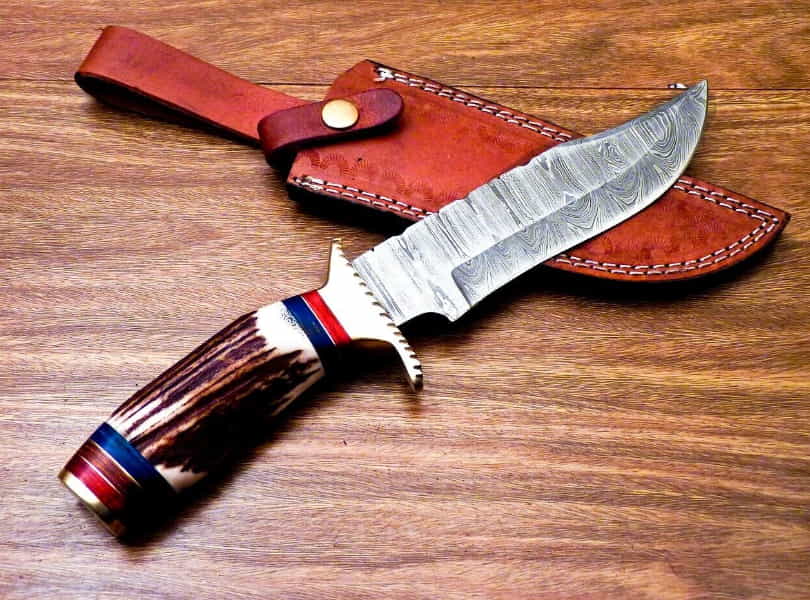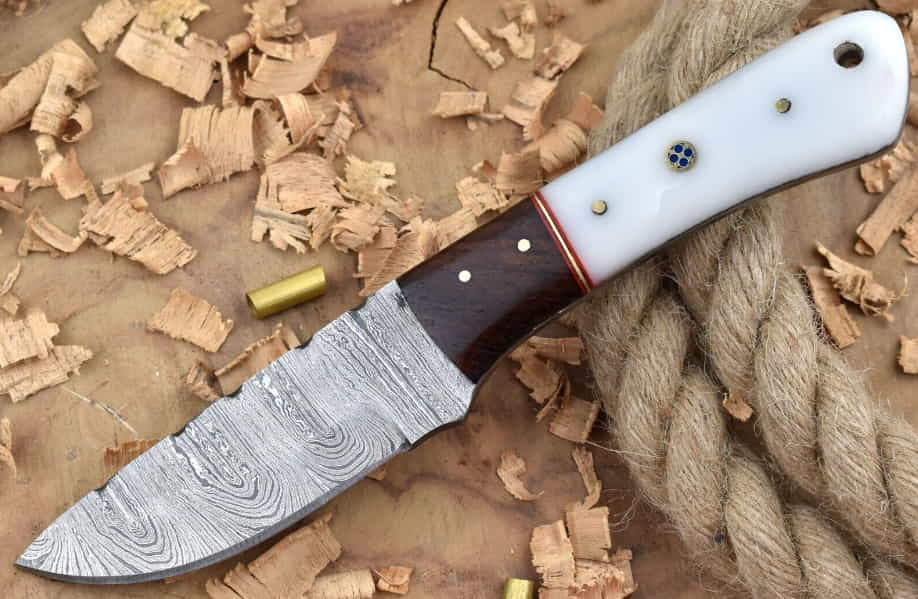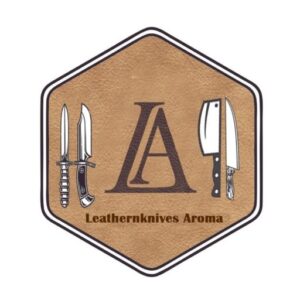Creating a handmade Damascus steel camping knives tailored for precision in the kitchen requires careful consideration of design, materials, craftsmanship, and functionality. Damascus steel, with its distinct pattern and exceptional sharpness, can elevate the cooking experience. Here’s a guide to crafting a camping knife optimized for precision in the kitchen:
-
Understanding the Purpose:
Recognize the specific needs of a kitchen camping knife, considering tasks like slicing, dicing, chopping, and other culinary preparations typical in a camping setting.
-
Material Selection:
Choose appropriate high-carbon and low-carbon steels to form the Damascus billet. The selection impacts sharpness, durability, and the final aesthetic pattern.
Consider stainless steel layers for corrosion resistance, especially in a kitchen setting.
-
Creating the Damascus Billet:
Layer alternating sheets of chosen steels to form the billet, ensuring a balance of Fknivescarbon content and aesthetics in the layers.
Forge-weld the layers together, paying careful attention to achieving a solid, flaw-free billet.
-
Forging and Shaping:
Heat the billet and forge it into the desired blade shape, incorporating design elements suitable for kitchen use.
Shape the blade profile, including the edge geometry, curvature, and tang, using forging techniques.
-
Pattern Development:
Employ specific pattern development techniques, such as twisting or folding, to create a visually appealing pattern in the Damascus steel while maintaining functionality.
Experiment with different manipulations to achieve a unique and captivating pattern.

-
Grinding and Beveling:
Use precision grinding techniques to refine the blade’s shape, bevels, and edges, ensuring optimal sharpness and functionality for kitchen tasks.
Pay meticulous attention to achieving a razor-sharp edge suitable for precise cutting and slicing.
-
Heat Treatment:
Implement a specialized heat treatment process to achieve the desired hardness, toughness, and edge retention necessary for kitchen tasks.
Follow specific temperature cycles for hardening, tempering, and annealing to optimize blade properties.
-
Handle Design and Crafting:
Select a handle material that provides a comfortable and secure grip, such as stabilized wood, G10, or high-quality natural materials.
Design the handle for ergonomic comfort and ease of use during intricate kitchen work.
-
Handle Attachment and Finishing:
Attach the handle scales securely to the tang, ensuring a strong and durable bond using epoxy and pins.
Shape, sand, and finish the handle to a smooth and polished surface, enhancing both aesthetics and comfort.
-
Final Assembly and Quality Control:
Assemble the handmade Damascus steel camping knives, ensuring a perfect fit and alignment between the blade and handle.
Conduct rigorous quality checks to ensure the knife meets the desired standards of sharpness, balance, and overall functionality.

-
Final Touches and Presentation:
Sharpen the blade to an incredibly sharp edge, employing fine sharpening stones or honing methods suitable for kitchen use.
Present the finished handmade Damascus steel camping knives, showcasing its precision, beauty, and functionality.
By combining meticulous craftsmanship with the unique qualities of handmade Damascus steel camping knives designed for precision in the kitchen can enhance the cooking experience, whether in a camping setting or at home.
